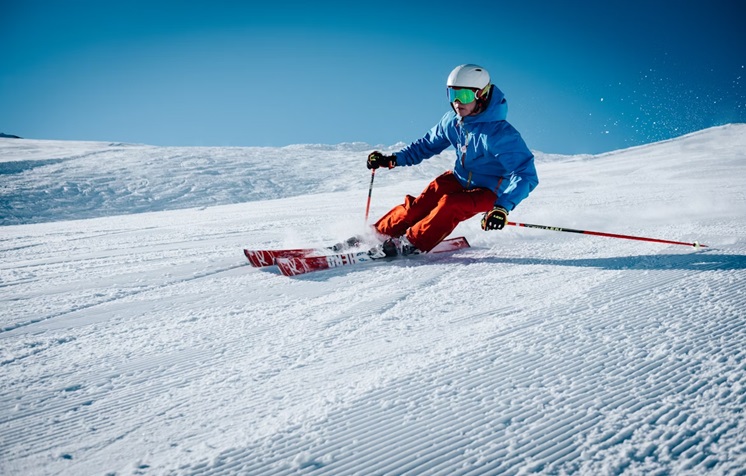If you’re heading to the slopes for the first time—or even if you’ve been a few times—you might be wondering whether ski-specific eyewear is actually necessary. After all, you’ve got sunglasses. They’ve got lenses. They block the sun. So what’s the difference?
As it turns out, quite a bit. Skiing exposes your eyes to a unique set of conditions that ordinary sunglasses, no matter how stylish or well-made, simply aren’t built to handle. That doesn’t mean you have to spend a fortune or buy gear that makes you look like a professional racer. But it does mean understanding what’s at stake, and how the right eyewear can make a huge difference to both safety and enjoyment on the mountain.
The Risk You Can’t See: UV and Glare at High Altitude
One of the main issues is UV exposure. The higher you go, the thinner the atmosphere becomes, and the more ultraviolet radiation reaches your skin and eyes. Snow reflects up to 80% of UV rays—essentially doubling your exposure compared to walking around at sea level on a sunny day.
If you’ve ever ended a ski day with sore, red eyes or a weird headache, UV could be the culprit. Long-term overexposure without protection increases the risk of conditions like photokeratitis (essentially sunburn of the cornea), as well as more serious eye damage over time.
Standard sunglasses may offer some UV protection, but ski goggles or specialised ski sunglasses typically provide full coverage around the eyes, blocking out reflected light from below and from the sides. That wraparound fit is part of what makes them so effective.
Clarity in a Whiteout: Why Lens Technology Matters
Another reason to consider dedicated eyewear is contrast. On the slopes, visibility can change in minutes—from bright sun to dense fog to flat light. In these conditions, it’s not just about seeing clearly, it’s about seeing contrast—the dips and ridges in the snow that tell you where to turn, where to slow down, and where to avoid altogether.
This is where lens technology really starts to count. Many ski goggles come with lenses designed to enhance contrast in snowy conditions, using tints like rose, amber or gold. Some even have interchangeable lenses or photochromic designs that adjust to changing light. These aren’t gimmicks—they make a noticeable difference in how confidently you can ski, especially if you’re not yet comfortable tackling varied terrain.
Oakley, for example, has developed its PRIZM lens technology specifically with snow sports in mind. Their goggles and sunglasses are popular for good reason: they genuinely sharpen detail without distorting colour, which makes navigating uneven or icy slopes far easier.
Sunglasses vs Goggles: What’s Right for You?
If you’re mainly cruising gentle pistes on bluebird days, a solid pair of sports sunglasses can do the job—as long as they’re designed for active use. Look for styles with a snug fit, rubberised grips, and lenses that block 100% of UV. Something like the Oakley Jawbreaker or a wraparound design from Prada Linea Rossa works well here—sporty, functional, but still sharp-looking enough for après-ski.
Goggles, on the other hand, are the better option for serious skiing or unpredictable weather. They offer a wider field of vision, protect your eyes from wind and snow, and work well with helmets. If you wear prescription glasses, many modern goggles are designed to fit over them comfortably—or you can get prescription inserts. And yes, you can get prescription ski eyewear that doesn’t compromise on looks.
What About Style?
Let’s be honest: we want to look good on the slopes. The phrase “all the gear, no idea” gets thrown around, but when it comes to eyewear, you don’t have to choose between looking stylish and being sensible.
Brands like Prada, Versace and Tom Ford have all brought their design edge to performance eyewear in recent years. You’ll find prescription sunglasses and sport-friendly frames that wouldn’t look out of place on the high street—or at the top of a chairlift!
So, do you really need special glasses for skiing? Strictly speaking, no one is going to stop you from hitting the slopes in your regular sunnies. But once you’ve experienced the difference that well-chosen eyewear can make—from clearer vision to better eye protection to simply enjoying your day without squinting or fogging up—you might wonder why you didn’t make the switch sooner.
The good news is, you’ve got options. Whether it’s a full-face goggle, a high-tech pair of sports sunglasses, or a sleek designer frame with proper lenses, you don’t have to compromise. And with next-day delivery available on many prescription options, even last-minute planners can ski smart.


Comments are closed.